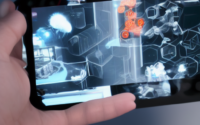Implementing Digital Twin Simulations for Smart City Planning
Implementing Digital Twin Simulations for Smart City Planning
Introduction to Digital Twin Technology:
Digital twin technology involves creating a virtual replica of a physical object, system, or process. It allows for real-time monitoring, analysis, and optimization by connecting the physical and virtual worlds. In the context of smart city planning, digital twin simulations can help city planners visualize and simulate various scenarios to make informed decisions. These simulations can provide valuable insights into how different urban systems interact and impact each other, enabling more efficient and sustainable urban development.
Benefits of Digital Twin Simulations for Smart City Planning:
1. Visualization: Digital twin simulations offer a visual representation of the city’s infrastructure, allowing planners to see how different components interact and identify potential issues.
2. Predictive Analysis: By running simulations based on real-time data, city planners can forecast future scenarios and plan accordingly to optimize resources and services.
3. Decision-Making: Digital twin simulations provide a testing ground for various planning scenarios, enabling stakeholders to make informed decisions that are supported by data.
4. Optimization: By analyzing the simulations, city planners can identify areas for improvement and optimize processes to enhance efficiency and sustainability.
5. Stakeholder Engagement: Digital twin simulations provide a platform for engaging with stakeholders, such as citizens, businesses, and government agencies, to gather feedback and input for city planning initiatives.
Steps to Implement Digital Twin Simulations for Smart City Planning:
[{‘sub_section_title’: ‘1. Define Objectives and Scope’, ‘sub_section_content’: ‘Identify the key objectives of using digital twin simulations for smart city planning and define the scope of the project. Determine the specific urban systems and components that will be included in the digital twin model.’}, {‘sub_section_title’: ‘2. Collect Data’, ‘sub_section_content’: ‘Gather relevant data from various sources, such as sensor networks, IoT devices, satellite imagery, and public records. Ensure that the data is accurate, up-to-date, and consistent to create a reliable digital twin model.’}, {‘sub_section_title’: ‘3. Build the Digital Twin Model’, ‘sub_section_content’: ‘Utilize simulation software and modeling tools to build a digital twin model of the city, including its infrastructure, transportation networks, energy systems, and environmental factors. Integrate the collected data to generate a realistic and dynamic representation of the city.’}, {‘sub_section_title’: ‘4. Run Simulations’, ‘sub_section_content’: “Run simulations based on different scenarios, such as population growth, infrastructure projects, and climate events, to analyze the impact on the city’s systems and services. Use the results to make data-driven decisions for smart city planning.”}, {‘sub_section_title’: ‘5. Analyze and Optimize’, ‘sub_section_content’: “Analyze the simulation results to identify areas for improvement and optimization. Evaluate the performance of the city’s systems, assess risks, and explore opportunities for enhancing sustainability and resilience. Implement changes based on the insights gained from the simulations.”}, {‘sub_section_title’: ‘6. Engage Stakeholders’, ‘sub_section_content’: ‘Share the digital twin simulations with stakeholders, such as city officials, urban planners, developers, and residents, to gather feedback and insights. Encourage collaboration and participation in the smart city planning process to ensure alignment with community needs and priorities.’}]
Case Study: Digital Twin Simulations in Smart City Planning:
To illustrate the implementation of digital twin simulations for smart city planning, let’s consider a case study of a fictional city, ‘SmartCityX.’ The city planners of SmartCityX used digital twin technology to create a virtual model of the city’s urban infrastructure, transportation networks, and energy systems. By running simulations based on different growth scenarios and environmental factors, they were able to optimize resource allocation, improve service delivery, and enhance sustainability measures. The stakeholders of SmartCityX were actively engaged in the planning process, providing feedback and insights that shaped the future development of the city.
Challenges and Future Directions:
While digital twin simulations offer numerous benefits for smart city planning, there are also challenges to consider, such as data privacy, cybersecurity, interoperability, and scalability. Addressing these challenges will be crucial for the widespread adoption of digital twin technology in urban planning. In the future, advancements in AI, machine learning, and IoT capabilities are expected to further enhance the accuracy and functionality of digital twin simulations, making them indispensable tools for creating sustainable and resilient smart cities.


